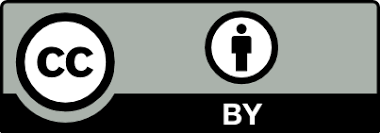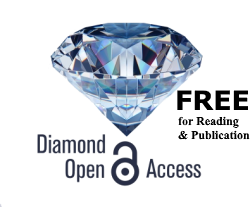KURUTMA VE HAŞLAMA İŞLEMLERİNİN Holothuria forskali (Delle Chiaje, 1823)’NİN BESİN BİLEŞENLERİNE ETKİSİ
Abstract
Bu çalışmada
Türkiye denizlerinde bulunan ve ekonomik olarak değerlendirilmeyen deniz
hıyarı (Holothuria forskali Delle
Chiaje, 1823) türünde haşlama ve kurutma işlemlerinin besin bileşenlerine
etkilerinin belirlenmesi amaçlanmıştır. Çalışma
materyali İzmir Körfezi’nden temin edilmiştir. Besin analizleri sonucunda taze ve kurutulmuş örneklerin ham protein
oranının sırasıyla % 11.99 ±0.185 – 60.92
±0.124 aralığında, nem içeriğinin %86.93 ±0.140 – 10.33 ±0.040 aralığında ve ham yağ içeriklerinin
oldukça düşük (% 0.256 ±0.208 – Taze) olduğu belirlenmiştir. İnorganik madde
içeriği kuru örneklerde yüksek bulunmuştur. Taze, haşlanmış ve kurutulmuş örneklerin
yağ asiti analizlerinde en yüksek çoklu doymamış yağ asitlerinin (PUFA) taze örneklerde bulunduğu saptanmıştır
(%36.40 ±0.03). EPA (Eikosapenta enoik asit) + DHA (Dekosa hekza enoik asit)
içeriğinin kurutma ve haşlama işlemlerinden önemli oranda etkilenmediği
(P>0,05) tespit edilmiştir. Türkiye
denizlerinde bulunan ancak ekonomik olarak değerlendirilmeyen H.forskali türünün protein oranı yüksek,
yağ içeriğinin düşük olduğu, bu suretle beslenme açısından diyetetik bir gıda
olarak değerlendirilebileceği, toplam yağ asitleri içerisinde en yüksek oranın
uzun zincirli yağ asitleri (PUFA) değerine ait olduğu, dolayısıyla PUFA
bakımından zengin bir tür olduğu, beslenme açısından önem arzeden temel yağ
asitlerinin (EPA ve DHA) içeriklerinin yüksek olduğu ve uygulanan işleme
yöntemlerinin bu bileşenleri önemli oranda etkilemediği belirlenmiştir.
References
- Aminin, D.L., Menchinskaya, E.S., Pisliagin, E.A., Silchenko, A.S., Avilov, S.A., Kalinin, V.I. (2015): Anticancer Activity of Sea Cu¬cumber Triterpene Glycosides. Marine Drugs, 13: 1202-1223.
- AOAC (1995): Association of Official Agricul¬tural Chemists. Offical Method of Analysis of AOAC International, 16th Edition, 1995; Supplement, March 1996, AOAC Interna¬tional, Gaithersburg, MD, Chapter 41, p.21. Fatty Acid in Encapsulated Fish Oils and Fish Oil Methyl and Ethyl Esters. Method No: 991.39.
- AOAC (2000). AOAC Official Method 940.25 Nitrogen (Total) İn Seafood. First Action 1940, Official Methods Of Analysis of AOAC Internatıonal 17th Edition.
- Bligh, E.C., Dyer, W. J. (1959): A rapid method of total lipid extraction and purification. Ca-nadian Journal of Biochemistry and Physiol¬ogy, 37: 913-917.
- Chang-Lee, M.V., Price, R.J., Lampila L.E. (1989): Effect of Processing on Proximate Composition and Mineral Content of Sea Cu¬cumbers (Parastichopus spp.). Journal of Food Science, 54: 567-568.
- Chen, J.X. (2004): Present status and prospects of sea cucumber industry in China. Advances in Sea Cucumber Aquaculture and Management (ASCAM). FAO, Rome, Italy, pp. 25-38.
- Çaklı, Ş., Cadun, A., Kışla, D., Dinçer, T. (2004): Determination of Quality Characteristics of Holothuria tubulosa, (Gmelin, 1788)in Turk¬ish Sea (Aegean Region) Depending on Sun Drying Process Step Used in Turkey Journal of Aquatic Food Product Technology, 13(3): 69-78.
- De Moor, S., Waite, J.H., Jangoux, M., Flam¬mang, P. (2003): Characterization of the Ad¬hesive from Cuvierian Tubules of the Sea Cu¬cumber Holothuria forskali (Echinodermata, Holothuroidea). Marine Biotechnology, 5: 45-57
- Dhinakaran, D.I., Lıpton, A.P. (2015): Antitumor and Antifungal Activities of Organic Extracts of Sea cucumber Holothuria atra from the Southeast Coast of India. Journal of Ocean University of China, 14(1): 185-189.
- Emiroğlu, D., Günay, D. (2008): Çevre ve Sağlık Dostu Deniz Hıyarı. Su Dünyası, 18-19.
- Ersoy, B., Yanar, Y., Küçükgülmez, A., Çelik, M. (2006): Effects of Four cooking methods on the heavy metal concentrations of sea bass fil¬lets (Dicentrarchus labrax Linne, 1785). Food Chemistry, 99(4): 748-751.
- Fahmy, S.R., Amer, M.A., Al-Killidar, M.H. (2015): Ameliorative effect of the sea cucum¬ber Holothuria arenicola extract against gas¬tric ulcer in rats. The Journal of Basic & Ap¬plied Zoology, 72: 16-25.
- Fredalina, B.D., Ridzwan, B.H., Zainal Abidin, A.A., Kaswandi, M.A., Zaiton, B., Zali, I., Kit-takoop, P., Mat Jais, A.M. (1999): Fatty acid compositions in local sea cucumber, Stichomus chloronotus, for wound healing. General Pharmacology: The Vascu-lar System, 33: 337-340.
- Gökoğlu, N., Yerlikaya, P., Cengiz, E. (2004): Ef¬fects of cooking methods on the proximate composition and mineral contents of rainbow trout (Oncorhynchus mykiss). Food Chemis-try, 84(1): 19-22.
- Gladyshev, M.I., Sushchik, N.N., Gubanenko, G.A., Demirchieva, S.M., Kalachova GS. (2006): Effects of way of cooking on content of essential polyunsaturated fatty acids in muscle tissue of humpback salmon (On¬corhynchus gorbuscha). Food Chemistry, 96: 446-451.
- González-Wangüemert, M., Aydın, M., Conband, C. (2014): Assessment of sea cucumber pop-ulations from the Aegean Sea (Turkey): First insights to sustainable management of new fisheries. Ocean & Coastal Management, 92: 87-94.
- Guor, Y., Ding, Y., Xu, F., Liu, B., Kou, Z., Xiao, W., Zhu, J. (2015): Systems pharmacology-based drug discovery for marine resources: An example using sea cucumber (Holothuri¬ans). Journal of Ethnopharmacology, 165: 61-72.
- Haider, M.S., Sultana, R., Zehra, L., Tarar, O.M., Shirin,K., Afzal, W. (2015). A Study On Proximate Composition, Amino Acid Profile, Fatty Acid Profile And Some Mineral Con-tents In Two Species Of Sea Cucumber. The Journal of Animal & Plant Sciences, 25(1): 168-175.
- Kasai, T. (2002): Lipit Contents and Fatty Acid Composition of Total Lipit of Sea Cucumber Stichopus japanicus and Knowata (Salted Sea Cucumber Entrails). Food Science and Techonology Research, 9(1): 45-48.
- Lovell, R.T. (1981): Laboratory manuel for fish feed analysis and fish nutrition studies, De-partment of Fisheries and Allied Aquacul¬tures International Center for Aquaculture, Auburn University, 65 pp.
- Olivera-Castillo, L., Davalos, A., Grant, G., Valadez-Gonzalez, N., Montero, J., Barrera-Perez, H.A.M., ChiChi, Y., Olvera-Novoa, M.a., Ceja-Moreno, V., Acereto-Escoffie, P., Rubio-Pina, J., Rodriguez-Canul, R. (2015) Correction: Diets Containing Sea Cucumber (Isostichopus badionotus) Meals Are Hypo¬cholesterolemic in Young Rats. Plos One 10(4): 1-2.
- Özer, N.P., Mol, S., Varlık, C. (2004): Effect of the Handling Procedures on the Chemical Composition of Sea Cucumber. Turkish Jour¬nal of Fisheries and Aquatic Sciences, 4: 71-74.
- Öztürk, H. (2011): İki Farklı Şekilde Kurutulan Holothuria Tubulosa (Gmelin,1788)’Nın Kimyasal Bileşimindeki Değişimler. Süley¬man Demirel Üniversitesi Fen Bilimleri En¬stitüsü Su Ürünleri Avlama ve İşleme Teknolojisi Anabilim Dalı Yüksek Lisans Tezi.77s.
- Santos, R., Dias, S., Pinteus, S., Silva, J., Alves, C., Tecelao, C., Pedrosa, R., Pombo, A. (2015): Sea cucumber Holothuria forskali, a new resource for aquaculture? Reproductive biology and nutraceutical approach. Aquacul¬ture Research, 1–17, doi: 10.1111/are.12683
- Sebedio, J., Ratnayake, W.M.N., Ackman, R.G., Prevost, J. (1993): Stability of polyunsatu¬rated omega-3 fatty acids during deep fat fry¬ing of Atlantic mackerel (Scomber scombrus L.). Food Research International, 26(3): 163-172.
- Sioen, I., Haak, L., Raes, K., Hermans, C., He¬nauw, S.D., Smet, S.D., Camp, J.V. (2006). Effects of pan-frying in margarine and olive oil on the fatty acid composition of cod and salmon. Food Chemistry, 98(4): 609-617.
- Sun, H.L., Liang, M.Q., Jingping, Y., Bijuan, C. (2004). Nutrient requirements and growth of the sea cucumber, Apostichopus japonicus. In: Lovatelli, A., Conand, C., Purcell, S., Uthicke, S., Hamel, J., Mercier, A. (Eds.), Advances in Sea Cucumber Aquaculture and Management. FAO Fisheries Technical 463, FAO, Rome, Italy, pp. 327–331.
- Svetashev, V.I., Levin, V.S., Lam C. N., Nga, D. T. (1991): Lipid and fatty acid composition of holothurians from tropical and temperate waters. Comparative Biochemistry and Phys¬iology Part B: Comparative Biochemistry, 98(4): 489-494.
- Şahingöz, S.A. (2007): Omega-3 Yağ Asitlerinin İnsan Sağlığına Etkisi, Gazi Üniversitesi Endüstriyel Sanatlar Eğitim Fakültesi Dergisi, 21: 1-13.
- Telahigue, K., Hajji, T., Imen, R., Sahbi, O., El Cafsi, M. (2014): Effects of Drying Methods on the Chemical Composition of the Sea Cu¬cumber Holothuria forskali. The Open Food Science Journal, 8, 1-8.
- Türkkan, A., Cakli, S., Kilinc, B. (2008): Effects of cooking methods on the proximate compo-sition and fatty acid composition of sea bass (Dicentrarchus labrax Linneaeus). Food Bi-oprod Process, 11: 1-4.
- Weber, J., Bochi, V.C., Riberio, C.P., Victorlo, A.M., Emanuelli, T. (2008): Effect of differ¬ent cooking methods on the oxidation, proxi¬mate and fatty acid composition of silver cat¬fish (Rhamdia quelen) fillets. Food Chemis¬try, 106: 140-146.
- Wen, J., Hu, C., Fan, S. (2010): Chemical compo¬sition and nutritional quality of sea cucum¬bers. Journal of the Science and Food Agri¬culture, 90: 2469-2474.
- Yu, H., Gao, Q.F., Dong, S.L., Wen, B. (2015): Changes in fatty acid profiles of sea cucum¬ber Apostichopus japonicus (Selenka) in¬duced by terrestrial plants in diets. Aquacul¬ture, 442: 119-124.
- Yuan, X., Yang, H., Zhou, Y., Mao, Y., Zhang, T., Liu, Y. (2006): The influence of diets con-taining dried bivalve feces and/or powdered algae on growth and energy distribution in sea cucumber Apostichopus japonicus (Selenka) (Echinodermata: Holo¬thuroidea). Aquaculture, 256: 457-467.
- Zacarias-Soto, M., Olvera-Novoa, M.A. (2015): Effect of Different Diets on Body Biochemi¬cal Composition of the Four-sided Sea Cu¬cumber, Isostichopus badionotus, Under Cul¬ture Conditions. Journal of The World Aqua¬culture Society, 46(1): 45-52,
- Zhong,Y., Khan, M.A., Shahidi, F. (2007): Com¬positional Characteristics and Antioxidant Properties of Fresh and Processed Sea Cu¬cumber (Cucumaria frondosa). Journal of the Agricultural and Food Chemistry, 55(4): 1188-1192.
THE EFFECTS OF DRYING & BOILING PROCESS ON NUTRITIONAL COMPONENTS OF Holothuria forskali (Delle Chiaje, 1823)
Abstract
In this
study, It was aimed to determine the effects of boiling and drying process to
food components of Holothuria forskali (Della Chiaja, 1823), present in Turkish seas
and not utilised economically. The material was obtained from Izmir Bay. It was
determined that its crude protein content was 11.99 ±0.185 - 60.92 ±0.124 % , moisture content 86.93 ±0.140 -range of 10.33 ± 0.040 % and
crude lipid content was very low fresh and dried samples. Inorganic matter
content was higher in the dried sample. The level of polyunsaturated fatty acid
(PUFA) was significantly higher in fresh samples than boiled and dried samples
has been found in fresh samples (36.40% ± 0.03). EPA (Eicosapentaenoic acid) +
DHA (Decosahexaenoic acid) were not affected significantly (P> 0.05) by the
drying and boiling process. The protein content was high in Holothuria forskali (Della Chiaja, 1823) and having high in
protein content, sea cucumber can be utilised as a protein source. It is also
low in lipid content. Thus, sea cucumber can be evaluated as a dietetic food in
terms of nutrition. Also it has high rate of long-chain fatty acids (PUFA) and
rich in EPA and DHA. All applied processing methods were not effected the
fatty acid components in significant rates in sea cucumber.
References
- Aminin, D.L., Menchinskaya, E.S., Pisliagin, E.A., Silchenko, A.S., Avilov, S.A., Kalinin, V.I. (2015): Anticancer Activity of Sea Cu¬cumber Triterpene Glycosides. Marine Drugs, 13: 1202-1223.
- AOAC (1995): Association of Official Agricul¬tural Chemists. Offical Method of Analysis of AOAC International, 16th Edition, 1995; Supplement, March 1996, AOAC Interna¬tional, Gaithersburg, MD, Chapter 41, p.21. Fatty Acid in Encapsulated Fish Oils and Fish Oil Methyl and Ethyl Esters. Method No: 991.39.
- AOAC (2000). AOAC Official Method 940.25 Nitrogen (Total) İn Seafood. First Action 1940, Official Methods Of Analysis of AOAC Internatıonal 17th Edition.
- Bligh, E.C., Dyer, W. J. (1959): A rapid method of total lipid extraction and purification. Ca-nadian Journal of Biochemistry and Physiol¬ogy, 37: 913-917.
- Chang-Lee, M.V., Price, R.J., Lampila L.E. (1989): Effect of Processing on Proximate Composition and Mineral Content of Sea Cu¬cumbers (Parastichopus spp.). Journal of Food Science, 54: 567-568.
- Chen, J.X. (2004): Present status and prospects of sea cucumber industry in China. Advances in Sea Cucumber Aquaculture and Management (ASCAM). FAO, Rome, Italy, pp. 25-38.
- Çaklı, Ş., Cadun, A., Kışla, D., Dinçer, T. (2004): Determination of Quality Characteristics of Holothuria tubulosa, (Gmelin, 1788)in Turk¬ish Sea (Aegean Region) Depending on Sun Drying Process Step Used in Turkey Journal of Aquatic Food Product Technology, 13(3): 69-78.
- De Moor, S., Waite, J.H., Jangoux, M., Flam¬mang, P. (2003): Characterization of the Ad¬hesive from Cuvierian Tubules of the Sea Cu¬cumber Holothuria forskali (Echinodermata, Holothuroidea). Marine Biotechnology, 5: 45-57
- Dhinakaran, D.I., Lıpton, A.P. (2015): Antitumor and Antifungal Activities of Organic Extracts of Sea cucumber Holothuria atra from the Southeast Coast of India. Journal of Ocean University of China, 14(1): 185-189.
- Emiroğlu, D., Günay, D. (2008): Çevre ve Sağlık Dostu Deniz Hıyarı. Su Dünyası, 18-19.
- Ersoy, B., Yanar, Y., Küçükgülmez, A., Çelik, M. (2006): Effects of Four cooking methods on the heavy metal concentrations of sea bass fil¬lets (Dicentrarchus labrax Linne, 1785). Food Chemistry, 99(4): 748-751.
- Fahmy, S.R., Amer, M.A., Al-Killidar, M.H. (2015): Ameliorative effect of the sea cucum¬ber Holothuria arenicola extract against gas¬tric ulcer in rats. The Journal of Basic & Ap¬plied Zoology, 72: 16-25.
- Fredalina, B.D., Ridzwan, B.H., Zainal Abidin, A.A., Kaswandi, M.A., Zaiton, B., Zali, I., Kit-takoop, P., Mat Jais, A.M. (1999): Fatty acid compositions in local sea cucumber, Stichomus chloronotus, for wound healing. General Pharmacology: The Vascu-lar System, 33: 337-340.
- Gökoğlu, N., Yerlikaya, P., Cengiz, E. (2004): Ef¬fects of cooking methods on the proximate composition and mineral contents of rainbow trout (Oncorhynchus mykiss). Food Chemis-try, 84(1): 19-22.
- Gladyshev, M.I., Sushchik, N.N., Gubanenko, G.A., Demirchieva, S.M., Kalachova GS. (2006): Effects of way of cooking on content of essential polyunsaturated fatty acids in muscle tissue of humpback salmon (On¬corhynchus gorbuscha). Food Chemistry, 96: 446-451.
- González-Wangüemert, M., Aydın, M., Conband, C. (2014): Assessment of sea cucumber pop-ulations from the Aegean Sea (Turkey): First insights to sustainable management of new fisheries. Ocean & Coastal Management, 92: 87-94.
- Guor, Y., Ding, Y., Xu, F., Liu, B., Kou, Z., Xiao, W., Zhu, J. (2015): Systems pharmacology-based drug discovery for marine resources: An example using sea cucumber (Holothuri¬ans). Journal of Ethnopharmacology, 165: 61-72.
- Haider, M.S., Sultana, R., Zehra, L., Tarar, O.M., Shirin,K., Afzal, W. (2015). A Study On Proximate Composition, Amino Acid Profile, Fatty Acid Profile And Some Mineral Con-tents In Two Species Of Sea Cucumber. The Journal of Animal & Plant Sciences, 25(1): 168-175.
- Kasai, T. (2002): Lipit Contents and Fatty Acid Composition of Total Lipit of Sea Cucumber Stichopus japanicus and Knowata (Salted Sea Cucumber Entrails). Food Science and Techonology Research, 9(1): 45-48.
- Lovell, R.T. (1981): Laboratory manuel for fish feed analysis and fish nutrition studies, De-partment of Fisheries and Allied Aquacul¬tures International Center for Aquaculture, Auburn University, 65 pp.
- Olivera-Castillo, L., Davalos, A., Grant, G., Valadez-Gonzalez, N., Montero, J., Barrera-Perez, H.A.M., ChiChi, Y., Olvera-Novoa, M.a., Ceja-Moreno, V., Acereto-Escoffie, P., Rubio-Pina, J., Rodriguez-Canul, R. (2015) Correction: Diets Containing Sea Cucumber (Isostichopus badionotus) Meals Are Hypo¬cholesterolemic in Young Rats. Plos One 10(4): 1-2.
- Özer, N.P., Mol, S., Varlık, C. (2004): Effect of the Handling Procedures on the Chemical Composition of Sea Cucumber. Turkish Jour¬nal of Fisheries and Aquatic Sciences, 4: 71-74.
- Öztürk, H. (2011): İki Farklı Şekilde Kurutulan Holothuria Tubulosa (Gmelin,1788)’Nın Kimyasal Bileşimindeki Değişimler. Süley¬man Demirel Üniversitesi Fen Bilimleri En¬stitüsü Su Ürünleri Avlama ve İşleme Teknolojisi Anabilim Dalı Yüksek Lisans Tezi.77s.
- Santos, R., Dias, S., Pinteus, S., Silva, J., Alves, C., Tecelao, C., Pedrosa, R., Pombo, A. (2015): Sea cucumber Holothuria forskali, a new resource for aquaculture? Reproductive biology and nutraceutical approach. Aquacul¬ture Research, 1–17, doi: 10.1111/are.12683
- Sebedio, J., Ratnayake, W.M.N., Ackman, R.G., Prevost, J. (1993): Stability of polyunsatu¬rated omega-3 fatty acids during deep fat fry¬ing of Atlantic mackerel (Scomber scombrus L.). Food Research International, 26(3): 163-172.
- Sioen, I., Haak, L., Raes, K., Hermans, C., He¬nauw, S.D., Smet, S.D., Camp, J.V. (2006). Effects of pan-frying in margarine and olive oil on the fatty acid composition of cod and salmon. Food Chemistry, 98(4): 609-617.
- Sun, H.L., Liang, M.Q., Jingping, Y., Bijuan, C. (2004). Nutrient requirements and growth of the sea cucumber, Apostichopus japonicus. In: Lovatelli, A., Conand, C., Purcell, S., Uthicke, S., Hamel, J., Mercier, A. (Eds.), Advances in Sea Cucumber Aquaculture and Management. FAO Fisheries Technical 463, FAO, Rome, Italy, pp. 327–331.
- Svetashev, V.I., Levin, V.S., Lam C. N., Nga, D. T. (1991): Lipid and fatty acid composition of holothurians from tropical and temperate waters. Comparative Biochemistry and Phys¬iology Part B: Comparative Biochemistry, 98(4): 489-494.
- Şahingöz, S.A. (2007): Omega-3 Yağ Asitlerinin İnsan Sağlığına Etkisi, Gazi Üniversitesi Endüstriyel Sanatlar Eğitim Fakültesi Dergisi, 21: 1-13.
- Telahigue, K., Hajji, T., Imen, R., Sahbi, O., El Cafsi, M. (2014): Effects of Drying Methods on the Chemical Composition of the Sea Cu¬cumber Holothuria forskali. The Open Food Science Journal, 8, 1-8.
- Türkkan, A., Cakli, S., Kilinc, B. (2008): Effects of cooking methods on the proximate compo-sition and fatty acid composition of sea bass (Dicentrarchus labrax Linneaeus). Food Bi-oprod Process, 11: 1-4.
- Weber, J., Bochi, V.C., Riberio, C.P., Victorlo, A.M., Emanuelli, T. (2008): Effect of differ¬ent cooking methods on the oxidation, proxi¬mate and fatty acid composition of silver cat¬fish (Rhamdia quelen) fillets. Food Chemis¬try, 106: 140-146.
- Wen, J., Hu, C., Fan, S. (2010): Chemical compo¬sition and nutritional quality of sea cucum¬bers. Journal of the Science and Food Agri¬culture, 90: 2469-2474.
- Yu, H., Gao, Q.F., Dong, S.L., Wen, B. (2015): Changes in fatty acid profiles of sea cucum¬ber Apostichopus japonicus (Selenka) in¬duced by terrestrial plants in diets. Aquacul¬ture, 442: 119-124.
- Yuan, X., Yang, H., Zhou, Y., Mao, Y., Zhang, T., Liu, Y. (2006): The influence of diets con-taining dried bivalve feces and/or powdered algae on growth and energy distribution in sea cucumber Apostichopus japonicus (Selenka) (Echinodermata: Holo¬thuroidea). Aquaculture, 256: 457-467.
- Zacarias-Soto, M., Olvera-Novoa, M.A. (2015): Effect of Different Diets on Body Biochemi¬cal Composition of the Four-sided Sea Cu¬cumber, Isostichopus badionotus, Under Cul¬ture Conditions. Journal of The World Aqua¬culture Society, 46(1): 45-52,
- Zhong,Y., Khan, M.A., Shahidi, F. (2007): Com¬positional Characteristics and Antioxidant Properties of Fresh and Processed Sea Cu¬cumber (Cucumaria frondosa). Journal of the Agricultural and Food Chemistry, 55(4): 1188-1192.
Details
| Journal Section | Articles |
|---|---|
| Authors | |
| Publication Date | January 1, 2016 |
| Submission Date | May 27, 2015 |
| Published in Issue | Year 2016 Volume: 2 Issue: 1 |
Journal is licensed under a
CreativeCommons Attribtion-ShareAlike 4.0 International Licence 


Diamond Open Access refers to a scholarly publication model in which journals and platforms do not charge fees to either authors or readers.
Open Access Statement:
This is an open access journal which means that all content is freely available without charge to the user or his/her institution. Users are allowed to read, download, copy, distribute, print, search, or link to the full texts of the articles, or use them for any other lawful purpose, without asking prior permission from the publisher or the author. This is in accordance with the BOAI definition of open access.
Archiving Policy:
Archiving is done according to ULAKBİM "DergiPark" publication policy (LOCKSS).

